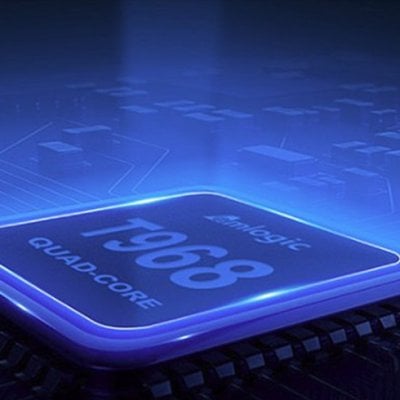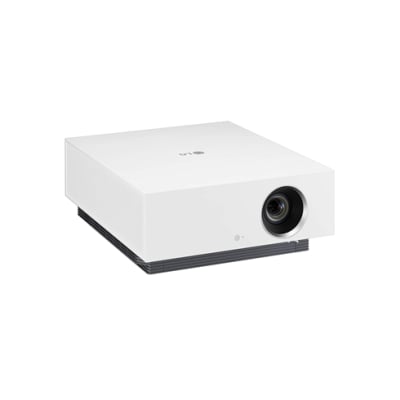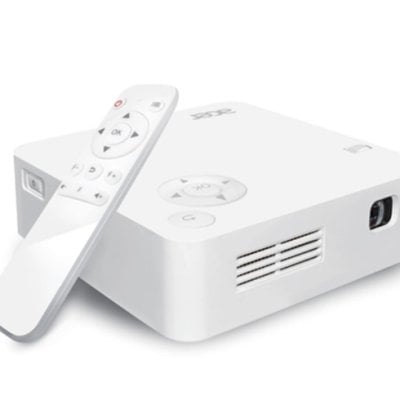HDMI interface is a common interface widely seen in all kinds of electronic devices, such as projectors, PC, TV boxes, and game players.
HDMI refers to High Definition Multimedia Interface. It is a wholly digital video and audio output interface which can send uncompressed audio and video signals.

1. Different Types of HDMI
- HDMI (HDCP 2.2)
A technology that protects high-value digital movies, TV shows, and audio content from illegal theft and copying.
- HDMI (ARC)
ARC refers to Audio Return Channel, which can be used for the output of TV digital audio and connection of power amplifier that supports ARC function to transmit the audio of TV.

- HDMI (Bit)
The Bit is a unit to describe Color Depth. The number of bits indicates the color of a single pixel. Common tablet screen has 6bit, and some high-end tablet screen features 8bit. 10 bit especially refers to a video coding technology, providing very high video picture quality with good performance in terms of color gradual and change.
- HDMI (MHL)
Using just five cables, MHL technology can transmit up to 4K ultra HD uncompressed video with 8-channel digital audio while also charging mobile devices.
2. Development and Updates of HDMI
Brief Introduction
HDMI 1.4 and HDMI 2.0 are the most common versions.
HDMI 2.0a supports 4K HDR.
HDMI 2.1 supports 10K resolution.
The world’s first Blu-ray player, Samsung BD-P1000, was launched in 2006 and has adopted HDMI. Since then, most Blu-ray players and full HD players are equipped with HDMI.
HDMI 1.0
Support Blu ray and full HD 1080 / 60p
The earliest HDMI version, launched in December 2002, can be described as specially designed for Blu-ray and other full HD software in that year. The biggest feature is that it integrates image and audio transmission at the same time. It is more suitable for video and audio equipment than DVI and DisplayPort pure image transmission interfaces on computers.
HDMI 1.0 supports DVD and Blu-ray video, with a maximum bandwidth of 4.95 Gbps, of which 3.96 Gbps is used to transmit video stream, which support 1080 / 60p or UXGA resolution. In terms of audio, it supports 8-channel LPCM 24bit / 192Khz. In other words, it has been broadcast to multi-channel Hi-Res, and the specification is quite strong.

HDMI 1.1
Add DVD audio
Launched in May 2004, the HDMI 1.1 supports DVD audio. DVD audio uses DVD disk to store PCM music from 16bit / 44.1KHz to 24bit / 192Khz. It used to be the successor of CD format like SACD, but unfortunately, neither format has been popularized.
HDMI 1.2
Support SACD
Launched in August 2005, it supports 1-bit audio, that is, SACD audio streaming, which can support up to 8 channels. HDMI CEC can control all compatible equipment with one remote control, which is quite convenient.
HDMI 1.2a
Compatible with CEC multi-device control
The small revision of HDMI 1.2 was launched in December of 2005. It supports all CEC (consumer electronic control) functions, so that compatible devices can be controlled with one remote control when connected with HDMI.
The new generation of TVs, Blu-ray devices, and other equipment can support deep color technology so that the displayed colors can be richer.
HDMI type-A, the most common HDMI plug, has been used since version 1.0, type C (Mini HDMI) was launched in version 1.3, and Type D (micro HDMI) was launched in version 1.4.
HDMI 1.3
Bandwidth increased to 10.2 Gbps, support deep color and HD sound streaming
HDMI 1.3 is a major revised version launched in June 2006, which increases the bandwidth to 10.2 Gbps and supports 30 bit, 36 bit and 48bit xvYCC, sRGB, and YCbCr deep color technology.
In addition, it also supports the streaming of Dolby TrueHD and DTS-HD MA HD sound effects, which can be decoded by Blu-ray player through HDMI streaming sound to the supported power amplifier. Subsequent HDMI 1.3a, 1.3b, 1.3b1, and 1.3c have only minor changes.
The 3D boom brought by Avatar has lasted for several years, so many of the new features of HDMI are optimized for 3D.
HDMI 1.4
Support 4K / 30p, 3D, and ARC
HDMI 1.4 is the most popular version in early years. It was launched in May 2009 and has supported 4K resolution, but only 4096 × 2160 / 24P or 3840 × 2,160/24p/25p/30p.
At the beginning of the 3D boom, HDMI 1.4 also supported 1080 / 24P and 720 / 50p / 60p 3D images. In terms of audio, a quite practical ARC (Audio Return Channel) function is added, so that TV audio can be returned to the power amplifier via HDMI and then output. 100Mbps network transmission function is also added, and the Internet connection can be shared through HDMI.

HDMI 1.4a, 1.4b
Small revision for 3D features
The 3D boom brought by Avatar continues all the way. Therefore, small revisions of HDMI 1.4a and 1.4b were launched in March 2010 and October 2011 respectively. They are mainly designed for 3D, such as adding two more 3D formats for broadcasting and supporting 1080 / 120P 3D images.
Starting from HDMI 2.0, the video resolution 4K / 60p is available. It is also the HDMI version commonly used by many TVs, power amplifiers, and other devices.
HDMI 2.0
True 4K version, bandwidth increased to 18 Gbps
HDMI 2.0 launched in September 2013 is also known as “HDMI UHD”. Although HDMI 1.4 already supports 4K video, it only supports lower specifications up to 30p. HDMI 2.0 increases the bandwidth from 10.2 Gbps to 18 Gbps and supports 4K / 60p video, It is compatible with Rec.2020 color depth. At present, many types of equipment, including TV, power amplifiers, and Blu-ray player, adopt this HDMI version.The revision of HDMI 2.0a is to add HDR feature.

HDMI 2.0a
Support HDR
It is a minor revised version launched in April 2015 based HDMI 2.0, which adds HDR feature.
At present, most new generation HDR-supported TVs adopt this version, and new power amplifiers and UHD Blu-ray players are also equipped with HDMI 2.0a terminals. Later, HDMI 2.0b added hybrid Log-gamma, an HDR format for broadcasting, based on the original HDR10 specification.
The HDMI 2.1 standard supports 8K resolution video.

HDMI 2.1 greatly improves the bandwidth to 48Gbps.
HDMI 2.1
Supports 8K/60Hz, 4K/120Hz video, and Dynamic HDR
The latest HDMI version, which came out in January 2017, has significantly increased the bandwidth to 48Gbps, supporting images up to 7,680 × 4,320/60Hz(8K/60p), or 4K/120Hz at higher frame rates.
HDMI 2.1 will continue to correspond to the original HDMI A, C, and D plug designs. It also supports the new Dynamic HDR technology. Compared with the current “static” HDR, “Dynamic” HDR can further improve the performance of the same level of light and dark according to the distribution of light and dark in each frame.
In terms of sound, HDMI 2.1 supports the new eARC technology, which can send back object-based sound such as Dolby Atmos.
HDMI2.1 is compatible with all devices that support HDMI2. HDMI2.1 supports up to 10 resolutions with a 60Hz refresh rate for 8K and a 120Hz refresh rate for 4K. It supports dynamic HDR and adaptive refresh rate technology with a 48Gbps bandwidth.
Dynamic HDR technology ensures that every frame of video is at its best value, including depth of field, detail, brightness, contrast, and a wider range of colors.
This version supports a maximum 10K resolution, 8K resolution refresh rate of 60Hz, 4K resolution refresh rate of 120Hz. It can be used by commercial AV video companies, enterprises, and for special purposes.




